Best Window Cleaning Tools: Your Ultimate Guide
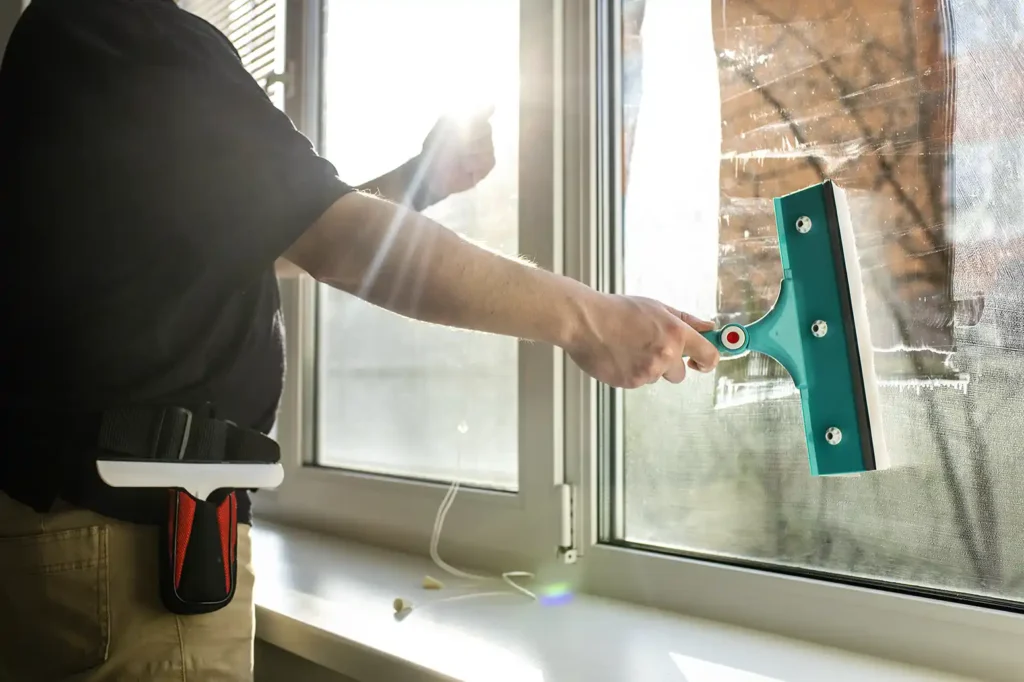
Table of Contents
If you’ve ever spent half an hour cleaning a window only to have it dry with streaks or haze, you already know one thing: your gear matters. Ask any experienced window cleaner and they’ll tell you — the right tools save time, deliver better results, and make you look like a pro.
What you’ll get in this guide:
- A full breakdown of professional window cleaning equipment
- The best window cleaner tools and equipment
- Insights on what actually works (and what doesn’t)
- Real-world tips for avoiding common mistakes
- A simple system to keep your gear and workflow organised
Why High-Quality Window Cleaning Tools Matter
There’s a reason seasoned pros stick with the same few brands. They’ve tested everything and know what works. Cheap tools might look the part but can leave streaks, break on the job, or slow you down.
Investing in better gear helps you:
- Leave a streak-free finish that clients notice
- Work faster and take on more jobs per day
- Avoid rework, complaints, or warranty callbacks
- Protect your hands, back, and shoulders with ergonomic options
- Look more professional (especially if you’re charging premium rates)
RELATED ARTICLE: How To Start Your Own Cleaning Business: Step-by-step Guide
Essential Window Cleaning Equipment
1. Squeegees: Your Most Important Tool
Forget the dollar-store gear. A proper squeegee is non-negotiable.
What to look for:
- Replaceable rubber blades (always keep extras in your pouch)
- Swivel handles for better control at awkward angles
- Channel sizes between 10–18 inches for versatility
- Preferred brands: Moerman Excelerator, Unger ErgoTec, Ettore Pro+
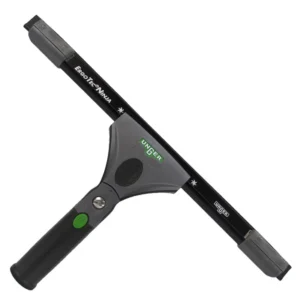
Pro Tip: Use soft rubber for colder climates and harder rubber for warm weather as temperature affects glide.
2. T-Bars and Sleeves
These are used to scrub the glass before squeegeeing, so they need to be durable, absorbent, and comfortable to use all day.
Choose:
- A lightweight, ergonomic T-bar with a swivel head
- Microfiber or abrasive sleeves (depending on glass condition)
- Washable sleeves with velcro or button closures
Don’t go too cheap. Bad sleeves leave lint, skip corners, or wear out in weeks.
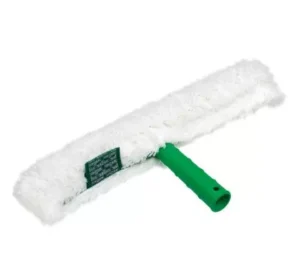
3. Scrapers and Blades
Used for paint overspray, stickers, and caked-on grime, but only when you know the glass is safe to scrape.
Look for:
- Stainless steel blades (won’t rust in your pouch)
- Safety covers and lock-in handles
- Options with angled heads for better leverage
Pro Tip: Never use a scraper on heat-treated or coated glass unless you’re absolutely sure it’s safe. Test a corner first.

4. Extension Poles
You’ll use this more than you think. Especially on 2-storey homes or storefronts with high signage.
Look for:
- Telescoping poles (2 or 3 sections)
- Lock-tight collars that don’t slip when wet
- Universal tips that fit squeegees, scrapers, and scrubbers

Pro pick: Unger OptiLoc or Ettore REA-C-H poles; both strike a good balance between weight and durability.
5. Window Cleaning Solution and Buckets
Leave the blue glass cleaner behind. You need a soap that cuts grime without leaving residue.
What pros use:
- A mix of dish soap + a few drops of rubbing alcohol (DIY)
- Or commercial solutions like Unger Liquid or Squeegee-Off
- A rectangular bucket that fits your T-bar
Pro Tip: Add a bucket-on-a-belt to save trips back and forth on smaller jobs.
RELATED ARTICLE: How Much To Charge for House Cleaning in 2025: Prices, Rates & Examples
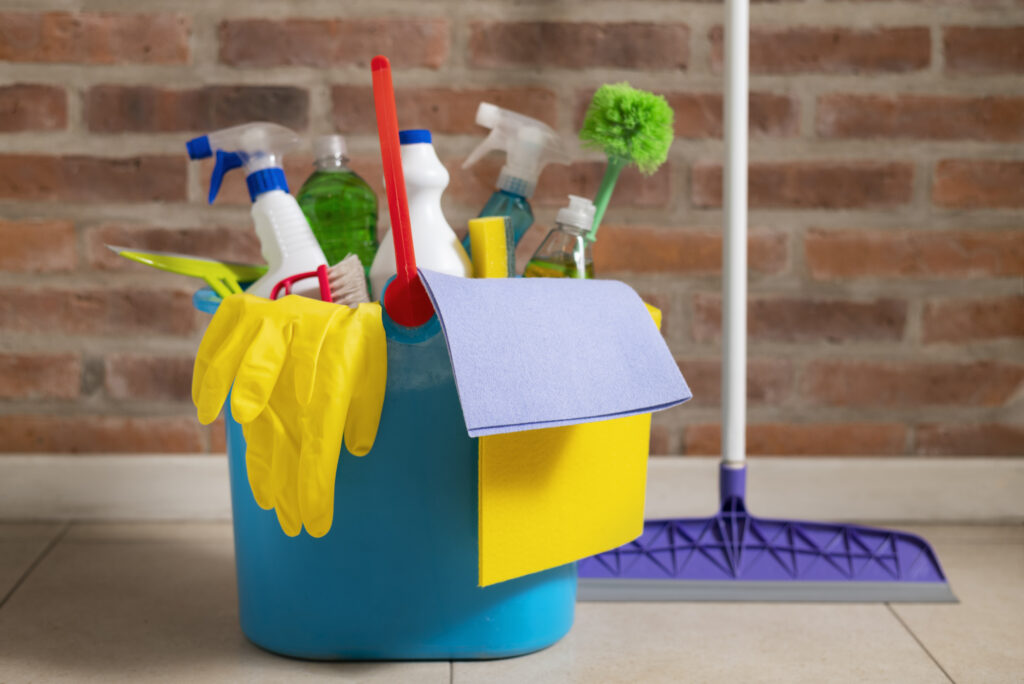
6. Microfiber Cloths
Microfiber is king for detailing corners, frames, and touch-ups.
Choose:
- High GSM, low-pile cloths (less lint)
- Colour-coded cloths for glass vs. frames
- Washable and quick-drying options
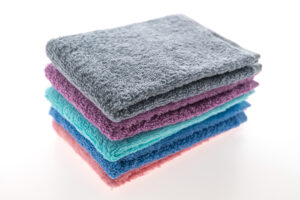
Pro Tip: Keep 3–5 in your belt per job. One for glass, one for detail, and one backup for drips.
7. Window Screen Cleaning Tools
A good add-on service and a quick upsell.
Recommended:
- Soft bristle screen brush or roller
- Portable screen washer (for high-volume pros)
- Mild soap + rinse system
Clients notice the difference when screens don’t ruin a freshly cleaned window.
8. Abrasives (use with care)
Sometimes you need more than a sleeve.
Use:
- White pads (non-scratch) for general gunk
- Bronze wool (not steel!) for mineral deposits
- Glass-safe polishing pastes for restoration jobs
Pro Tip: Test every surface first. Glass type varies, and some can scratch more easily than others.
9. Tool Belt or Holster
You’ll waste hours every week without one.
Look for:
- Pouches that drain water (not soak your leg)
- Quick access to squeegee, scraper, and cloths
- Adjustable belt for all-day comfort

Many cleaners use Moerman or Unger belts with clip-on holsters.
10. Ladders
Sometimes poles just won’t reach. A good ladder is your next best tool.
Go for:
- Telescoping ladders for portability
- Rubber feet and stabilisers for safety
- Fibreglass (non-conductive) if working near electric signage
Always check regulations and safety gear when working at height.
RELATED ARTICLE: Cleaning Services: A Simple Guide to Different Types
11. PPE (Personal Protective Equipment)
Even low-risk jobs can lead to slips, eye irritation, or chemical exposure.
At minimum, use:
- Nitrile gloves
- Non-slip shoes or boots
- Safety glasses or goggles
- High-visibility vest (for street-facing work)

Add a harness and lanyard if working at serious height.
12. Window Cleaning Software
You’ve got the tools—now manage the business like a pro.
Use software to:
- Schedule recurring jobs
- Track payments and follow-ups
- Save customer notes and job history
- Send branded invoices on the spot
Try our Invoice Maker to make sending invoices on the go easier. Designed for pros who don’t want to chase paperwork at the end of the day.
Common Window Cleaning Problems (and Tools That Solve Them)
| Problem | Tool You Need |
| Streaky glass | Replace squeegee rubber + use pro solution |
| Paint or tape residue | Glass-safe scraper with stainless blade |
| High windows | Telescoping extension pole |
| Dirty corners or frames | Microfiber detail cloths |
| Slippery floors or drips | Belt with holsters + spare cloth |
| Clients questioning results | Bronze wool + polish for restoration jobs |
RELATED ARTICLE: Cleaning Contracts: Your Guide To Winning More Business
Quality vs. Quantity
Investing in quality tools isn’t about buying more — it’s about buying better. Build your kit around the work you do most, and don’t be afraid to upgrade as you grow. One good squeegee can make the difference between a one-time job and a five-star repeat customer.
Remember:
- Too many tools slow you down: You don’t want to dig through 12 squeegees to find the one that actually works.
- Cheap backups don’t pay off: One poor-quality scraper or extension pole can cost you a job, or worse, damage a customer’s glass.
- It’s about reliability: The best cleaners can do more with fewer tools because they know their gear inside out.
And when it’s time to get paid, don’t rely on handwritten notes or clunky spreadsheets. Try our Invoice Maker to send professional invoices on the spot. Track payments, add your logo, and get paid faster.
FAQs about Best Window Cleaning Tools
Every 1–2 weeks for daily use, or when you start seeing streaks.
Dish soap is fine (in small amounts), but vinegar alone leaves residue. Use a professional formula for best results.
Yes. Commercial often needs longer poles, safety harnesses, and larger buckets. Residential tools tend to be more compact.
Squeegee, T-bar, scraper, 2 microfiber cloths, and a detail towel.
Yes, especially if you want to appear professional and get paid faster. It also saves time chasing overdue jobs later.
